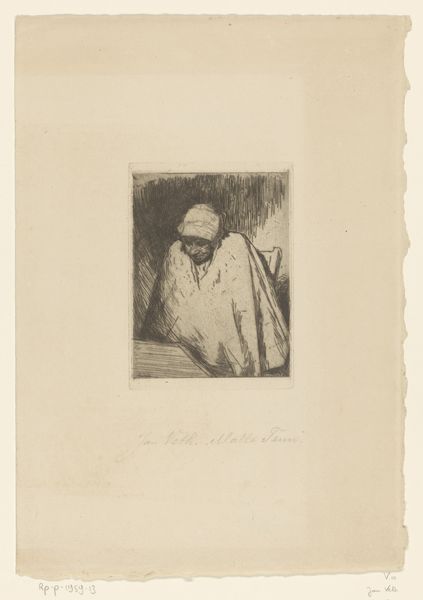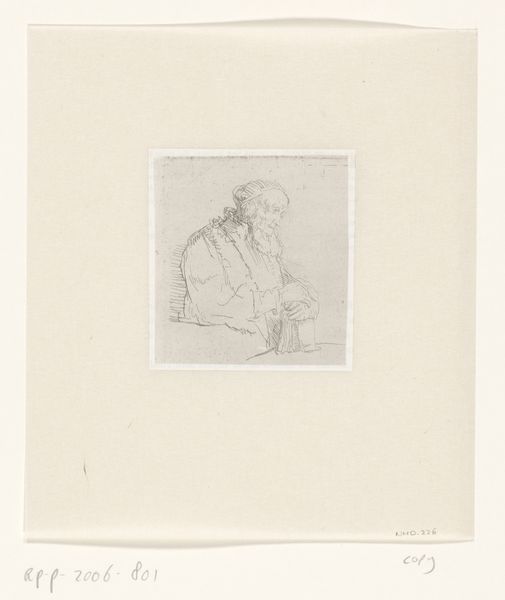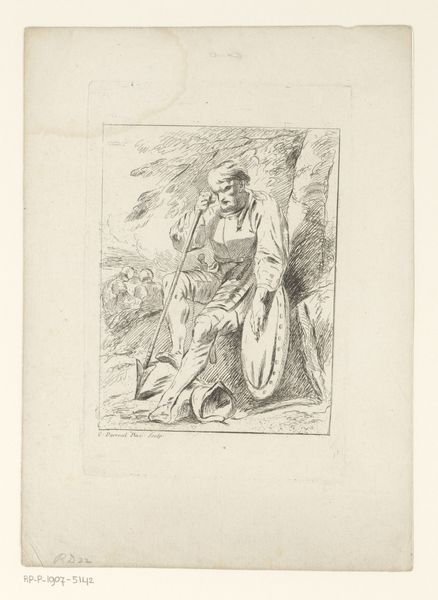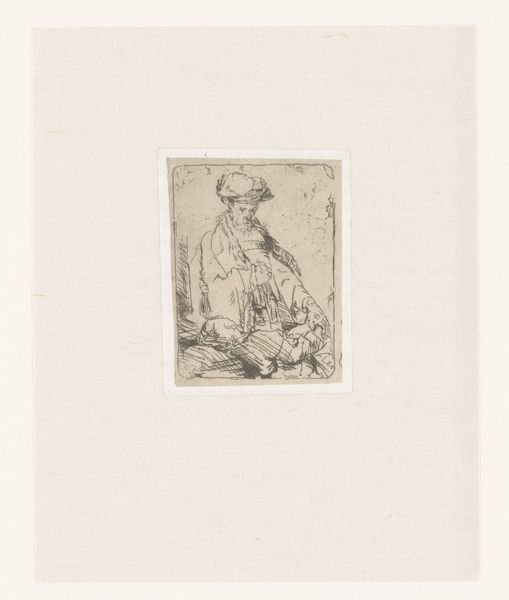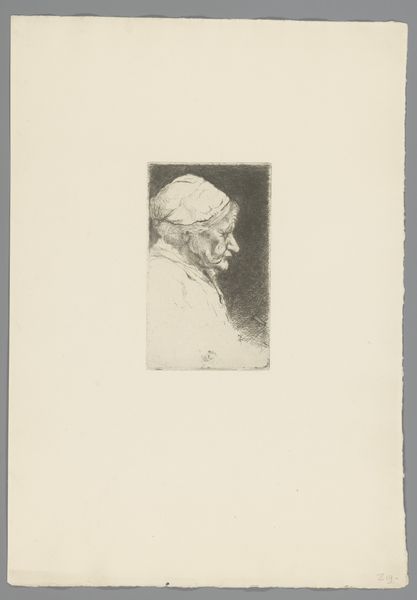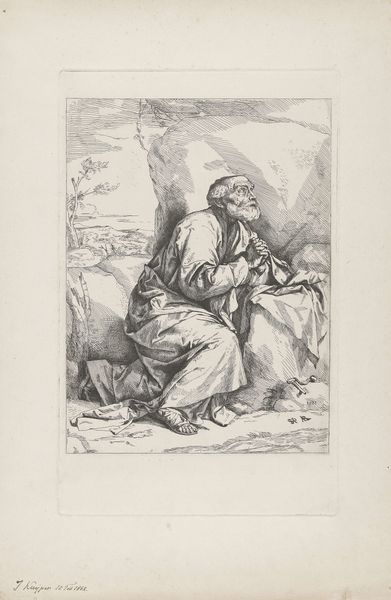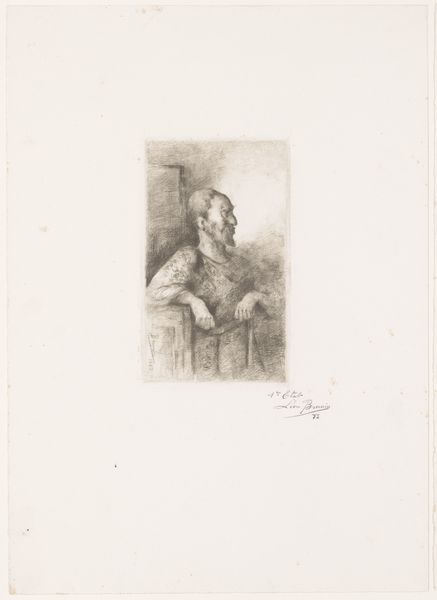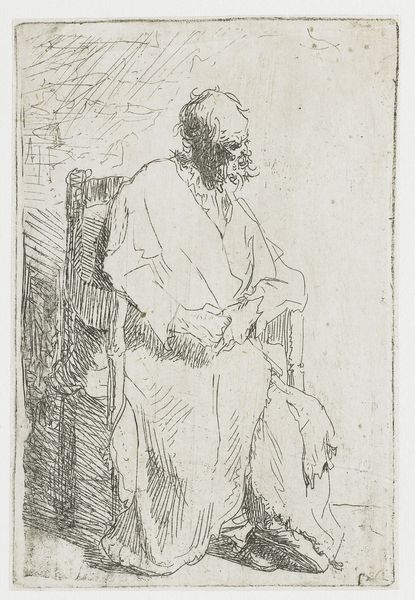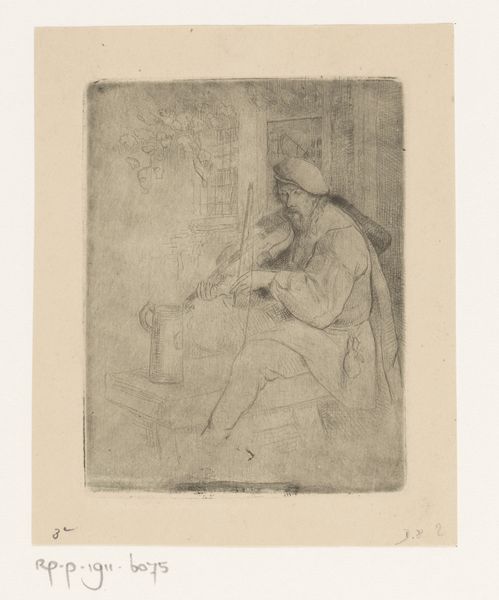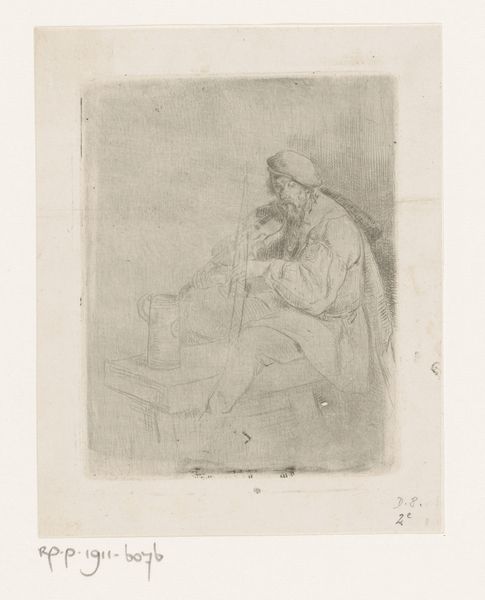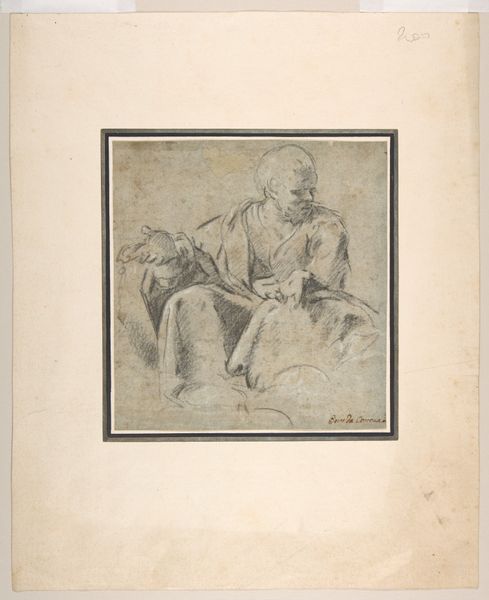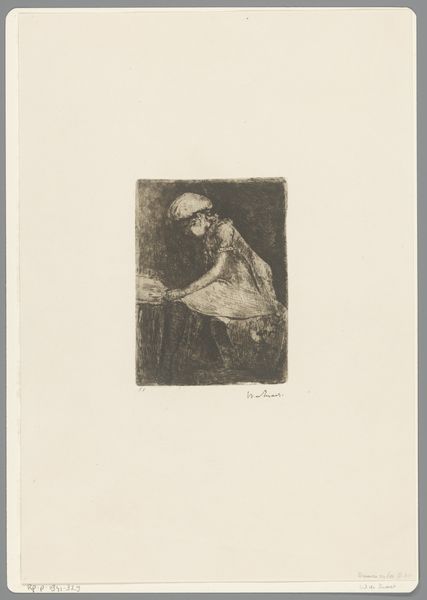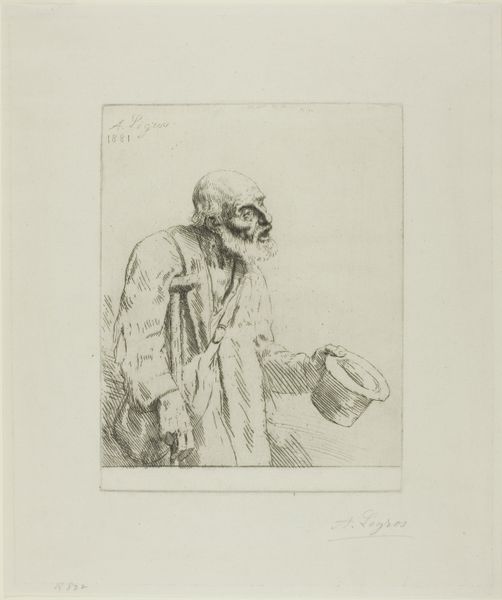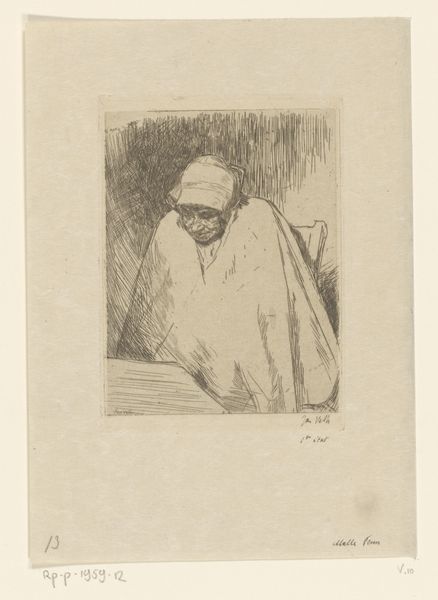
drawing, pen
#
portrait
#
drawing
#
figuration
#
pen
#
genre-painting
Dimensions: height 130 mm, width 88 mm
Copyright: Rijks Museum: Open Domain
Léopold Flameng etched this image of a seated beggar, capturing a poignant scene of destitution. The figure's pose is one of resignation, wrapped in a cloak that seems to symbolize both protection and confinement. Throughout history, images of cloaked figures appear—from medieval depictions of hermits to Renaissance portraits of philosophers. These figures often embody a sense of introspection or withdrawal from the world. In Flameng's etching, the cloak drapes heavily, evoking the weight of poverty and societal neglect. Consider the evolution of the cloak as a motif. Once a symbol of status and authority, here it morphs into a marker of marginalization. This transformation reflects a collective unease with the precariousness of human existence, a fear of falling into the shadows of society. The image engages us on a deep, subconscious level, reminding us of our shared vulnerability and the cyclical nature of fortune. The motif resurfaces, laden with new meanings, in each historical context, prompting a reevaluation of our societal values.
Comments
No comments
Be the first to comment and join the conversation on the ultimate creative platform.
